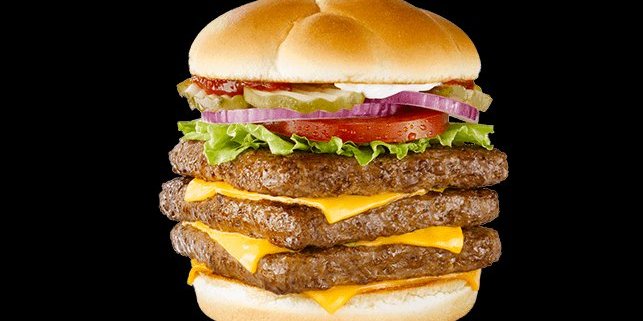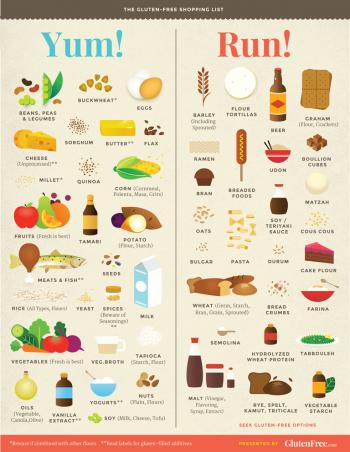Users Who Spiked

INVEST IN YOUR FOOD
Private Notes
Private Notes
Notes
INVEST in your Food. Tasty doesn't mean good for you.
Growing up in a middle class family, I know the importance of getting the most from you money. Being a Nutritionist, the most common comment I get is, healthy food is expensive food. This concept is something that I am familiar with. My parents would choose the most inexpensive groceries and would do well to feed our family. When we would go out to eat, we would get the dollar hamburgers so the kids would be happy and their wallets would be too.
So why is healthy food more expensive. A couple reasons would be low quality ingredients and supply and demand..
Cheap food usually means lower quality food. Companies like McDonald's have a dollar menu to draw in customers. Lower quality food means food that is not nutrient dense. You want a food to be packed full of nutrients so that you can replenish your body and give it what it needs. The reason fast food places don't do this is because nutrient dense food is usually the more expensive food.
An example of a nutrient dense food would be kale. I know that kale has been pretty trendy for the last couple of years, but there is hype for a reason. 100 grams of kale has Vitamin C, Vitamin A, Vitamin K1, B6, Potassium, Calcium, Magnesium, Copper, Manganese, 2 Grams of Fiber, and 3 Grams of Protein. All of these nutrients are important for a healthy diet.
Vitamin C- great for the immune system and for developing collagen
Vitamin A- necessary for eye health
Vitamin K1- necessary for blood clotting
Potassium- water and electrolyte balance
Magnesium- muscle relaxer
Copper- necessary for cognitive function, immune function, and bone density
Manganese- aids in the regulation of glucose
Fiber- keeps you regular
Protein- supports muscles
Even though kale is better for you it is more expensive. Unfortunately in this case, with fame comes fortune. Because kale is so popular, people are willing to pay more for the product driving prices up.
https://www.healthline.com/nutrition/11-most-nutrient-dense-foods-on-the-planet#section2
An example of low nutrient dense food would be iceberg lettuce. This is the lettuce that you see at most fast food restaurants and it's in tacos, on sandwiches, and salads. It mostly consists of fiber and water. It would be a much better decision to choose kale over iceberg simply because of the nutrient density. Kale is higher in price because it is not as easy to grow and restaurants will choose to buy iceberg lettuce over kale because it is cheaper.
Along with fast food places choosing the more inexpensive ingredients rather than quality ingredients, they are also able to sell their products at a lower cost because they have the demand. Supply and demand, fast food places are able to supply such large quantities of food because people keep coming back to eat it. The reason is because fast food is addicting.
Most fast food restaurants soak their food with fat, salt and sugar. Sugar is the most addictive food that we can consume. There are many studies and articles that connect sugar to disease. Sugar is linked to obesity, heart disease, type 2 diabetes, and cancer. Fast food places like this put sugar in literally every one of their products. Have you ever wondered why eating at those fast food places is appealing even though the second you take that last bite, you will regret ever eating it? And why it's so hard to resist stopping at that drive through on your way home from work? The reason is because sugar has been found to be more addictive than cocaine. https://www.healthline.com/health/food-nutrition/experts-is-sugar-addictive-drug#1
We train our brains to think of sugar as a reward. We celebrate with birthday cake, when we are good we get a sucker or a lolley, we put it in our coffee, and a spoonful over our breakfast. So what is an addiction, according to healthline.com "Dopamine is a neurotransmitter that is a key part of the "reward circuit" associated with addictive behavior. When a certain behavior causes an excess release of dopamine, you feel a pleasurable "high" that you are inclined to re-experience, and so repeat the behavior. As you repeat that behavior more and more, your brain adjusts to release less dopamine. The only way to feel the same "high" as before is to repeat the behavior in increasing amounts and frequency. This is known as substance abuse". You can see how this would be correlated with sugar. We are reward with sugar, our brains connect that reward with that food, dopamine is released, and we become happy. Our bodies enjoy that experience so we continue to chase that sensation by consuming it more frequently and in more quantities.
So when we pass those fast food places on our way home from work, our bodies remember the dopamine and they let your brain know that it needs it for that happy sensation to occur.
Along with sugar, fast food is filled tasty salt and fat. Most of us have worked in a fast food restaurant for a short period of our lives, or at least know someone that has. Have you ever looked at your char grilled hamburger or chicken and wondered how they got those marks without cooking on a grill? Turns out, they inject the meat with a mixture of salts, fats, and chemicals to imitate the grill marks. https://www.foodrepublic.com/2013/05/01/what-are-fake-grill-marks-made-of/
Instead of buying cheap, nutrient deficient, addictive food, invest in yourself. Retrain your brain by experimenting with actual nutrient dense food. Just because you didn't grow up eating kale, and just because it's a green leaf doesn't mean it's not tasty. I encourage you to not succumb to the sugar addiction. Research and invest in your food, your body with thank you in the future when you are happy and healthy with your grandkids instead of in a hospital.
Comments
Please login to post comments on this story
-
Not nice! Show me that picture of that tempting burger and then tell me to eat healthy haha. But jokes aside, thanks for sharing! Healthy eating is something I'm working on every day so thanks for this!
-
An example of a nutrient dense food would be kale. I know that kale has been pretty trendy for the last couple of years, but there is hype for a reason. 100 grams of kale has Vitamin C, Vitamin A, Vitamin K1, B6, Potassium, Calcium, Magnesium, Copper, Manganese, 2 Grams of Fiber, and 3 Grams of Protein. All of these nutrients are important for a healthy diet.Vitamin C- great for the immune system and for developing collagenVitamin A- necessary for eye healthVitamin K1- necessary for blood clotting
I love Kale. A perfect vegetable for smoothie, blends very well and camouflages to the taste of whatever flavors in your smoothie to me. Love making Kale chips too. Thanks for letting us know what benefit each Vitamin has for your health, and what foods are nutrient dense. -
An example of low nutrient dense food would be iceberg lettuce. This is the lettuce that you see at most fast food restaurants and it's in tacos, on sandwiches, and salads. It mostly consists of fiber and water. It would be a much better decision to choose kale over iceberg simply because of the nutrient density. Kale is higher in price because it is not as easy to grow and restaurants will choose to buy iceberg lettuce over kale because it is cheaper.
Yes, on my weight loss/health/fitness journey I was told the greener the greens (Darker), the better. I was also told by an auntie that makes sure the foods you're eating are colorful (naturally that is), like sweet potatoes, yellow squash, peppers, Kale, Mixed Greens, etc. -
This is great advice. I made a choice to eat healthier a couple years ago and I know it can be hard sometimes. But once you start you feel so much better and have way more energy, that you want to maintain it. Still have to implement kale into my diet though. Thanks for sharing!
-
So true. Thanks for reminding me how to stay on a good diet. It's too easy to forget.
-
Great piece! It is so important to give our bodies the fuel they need to run properly.

























